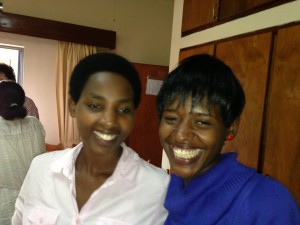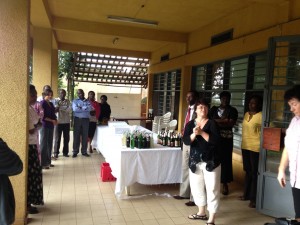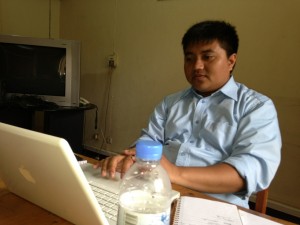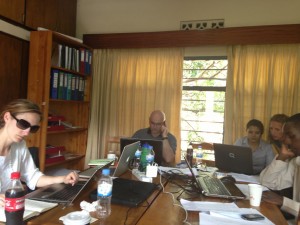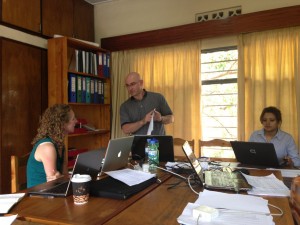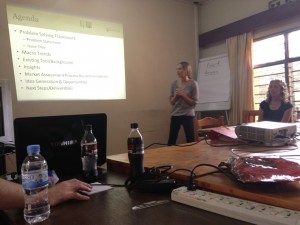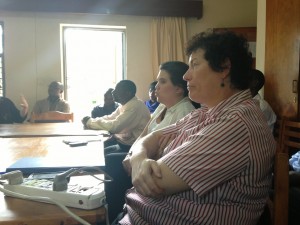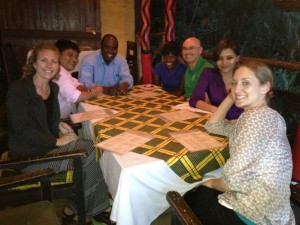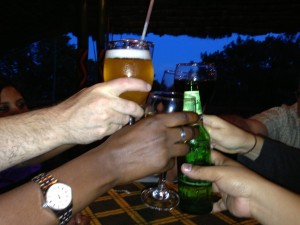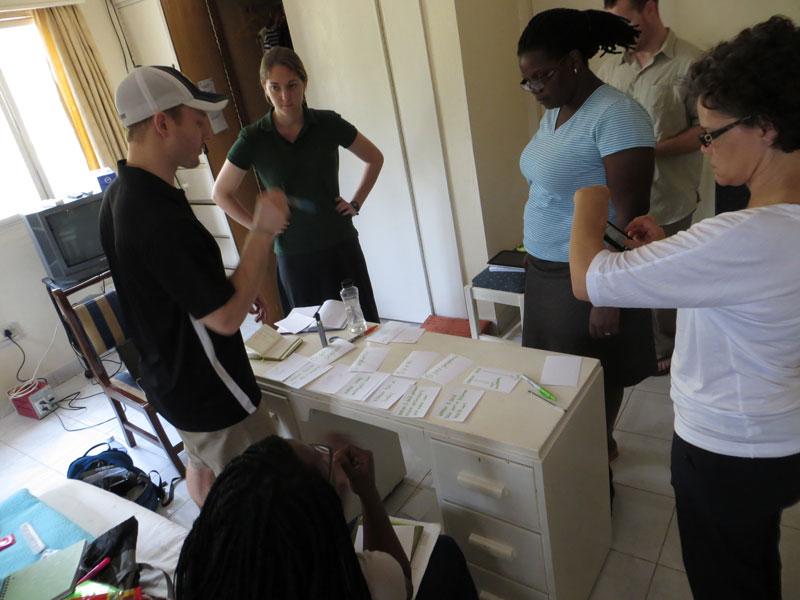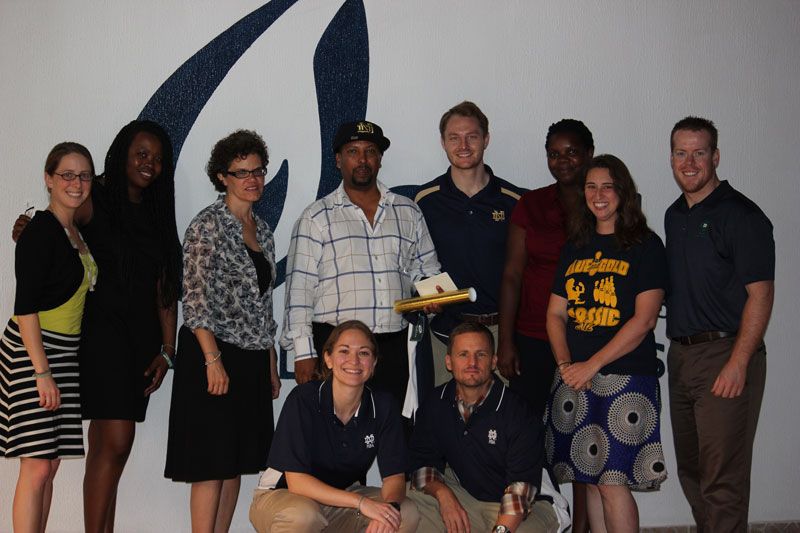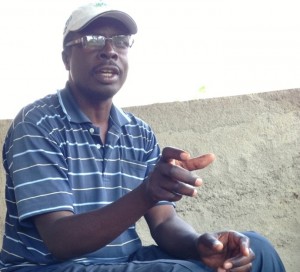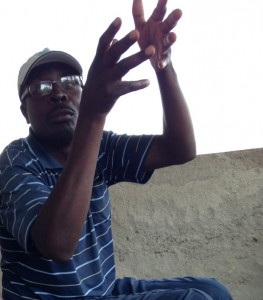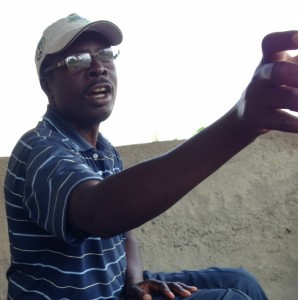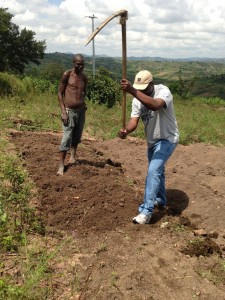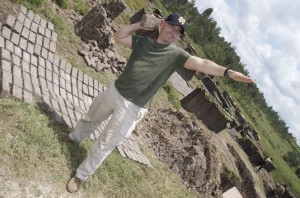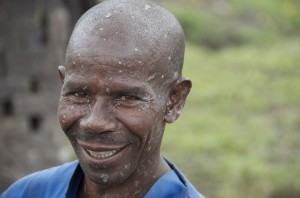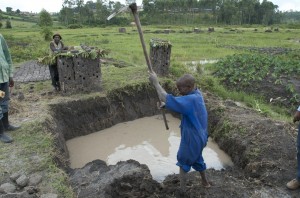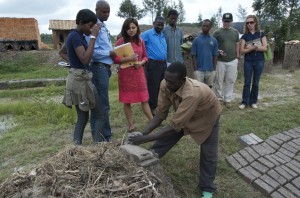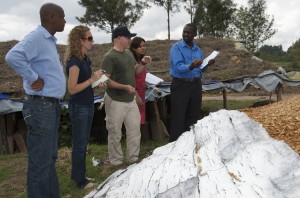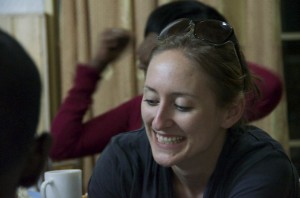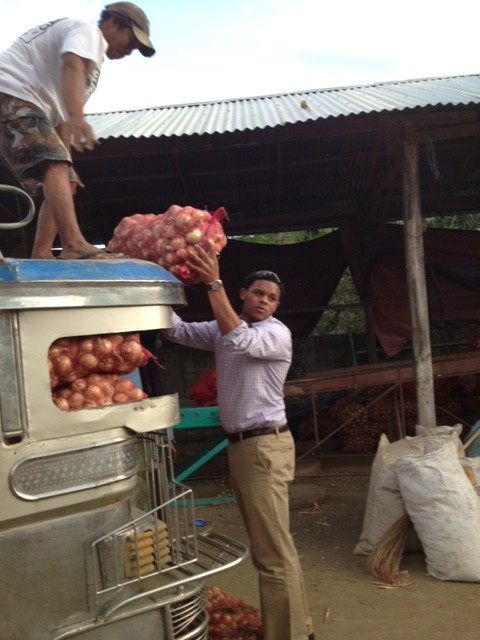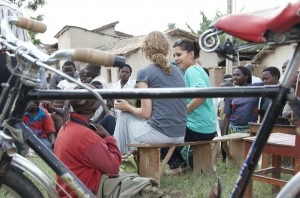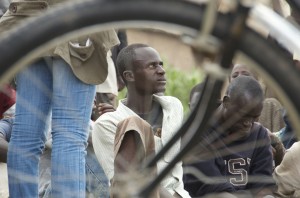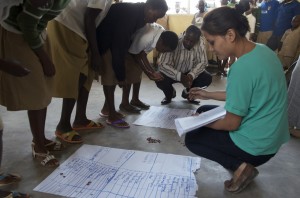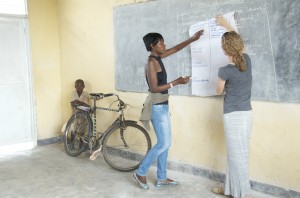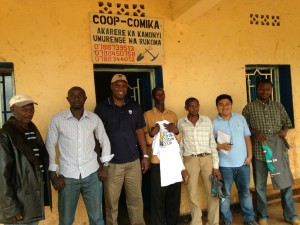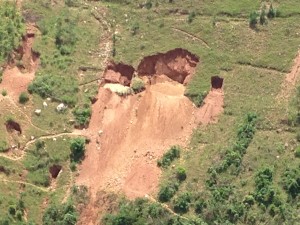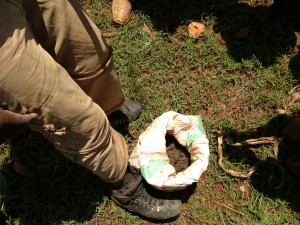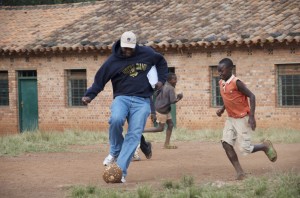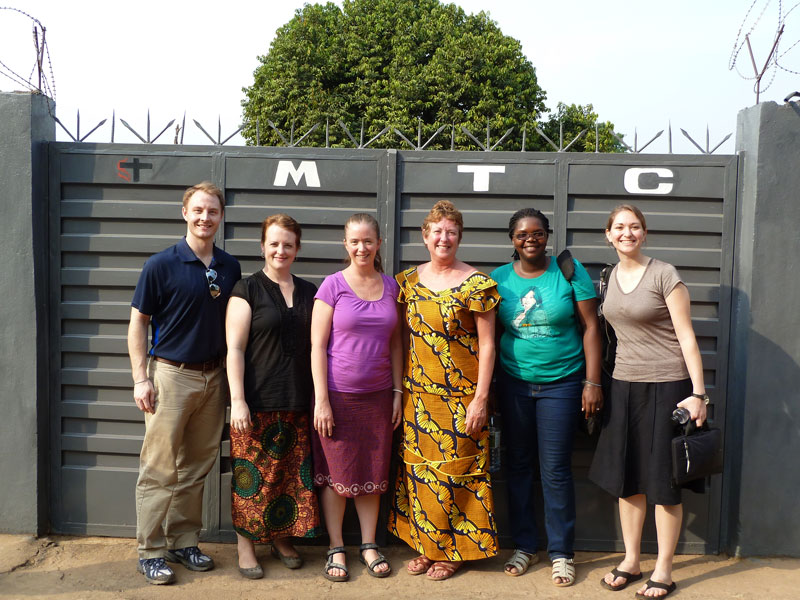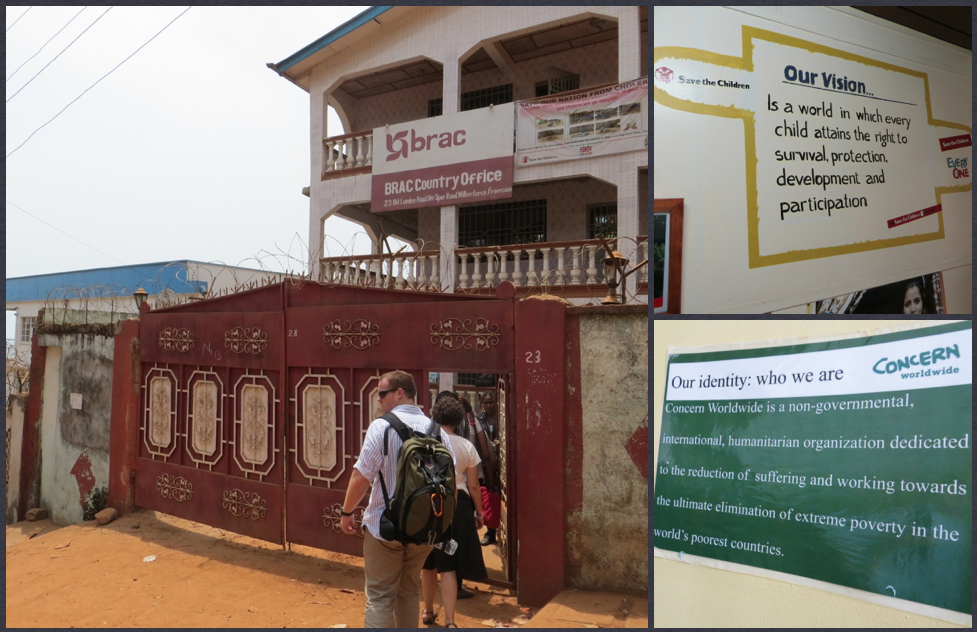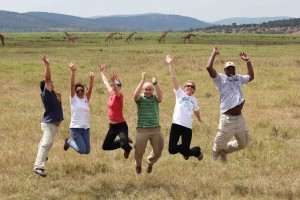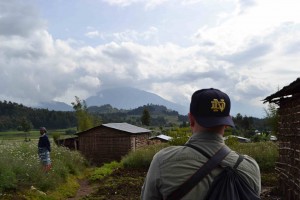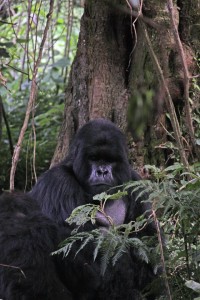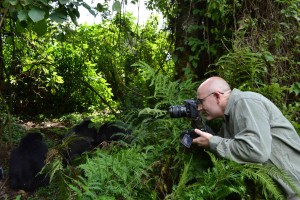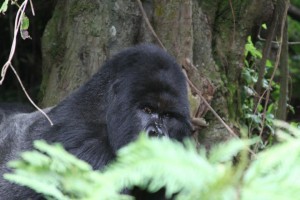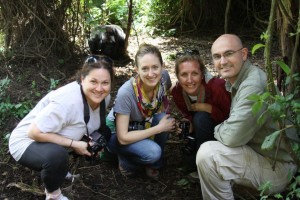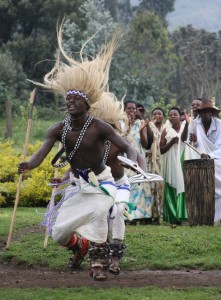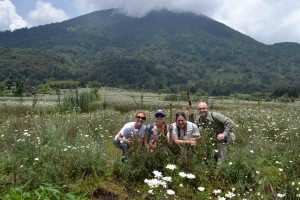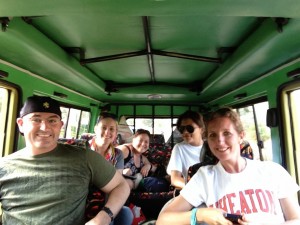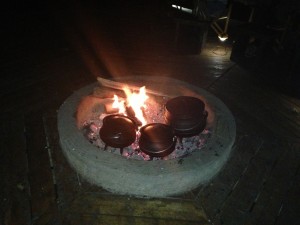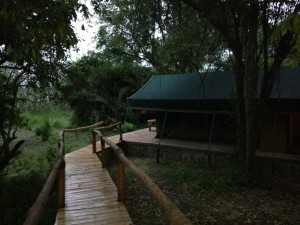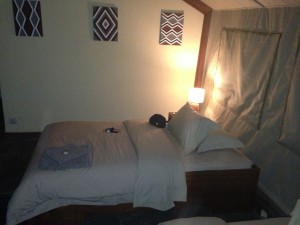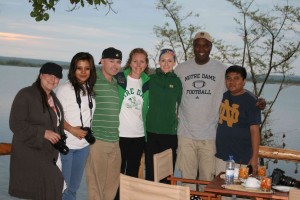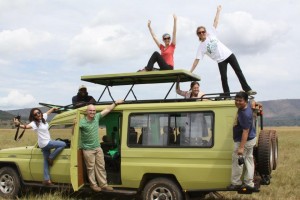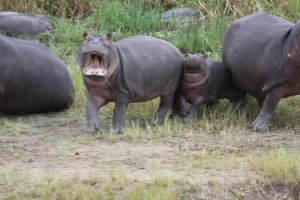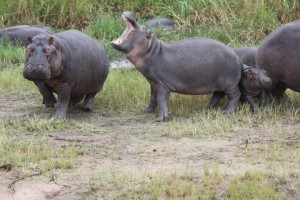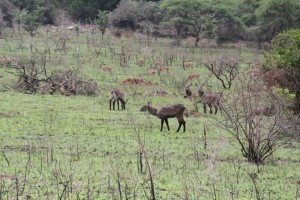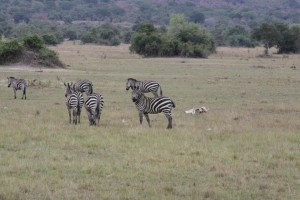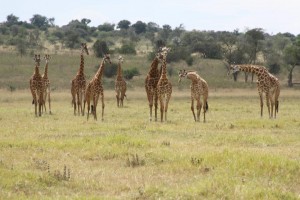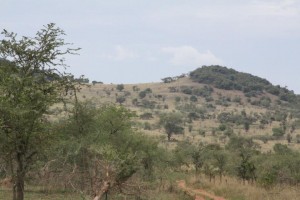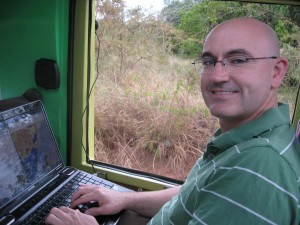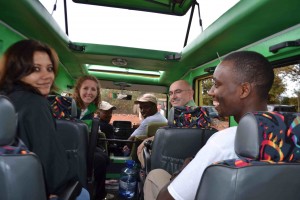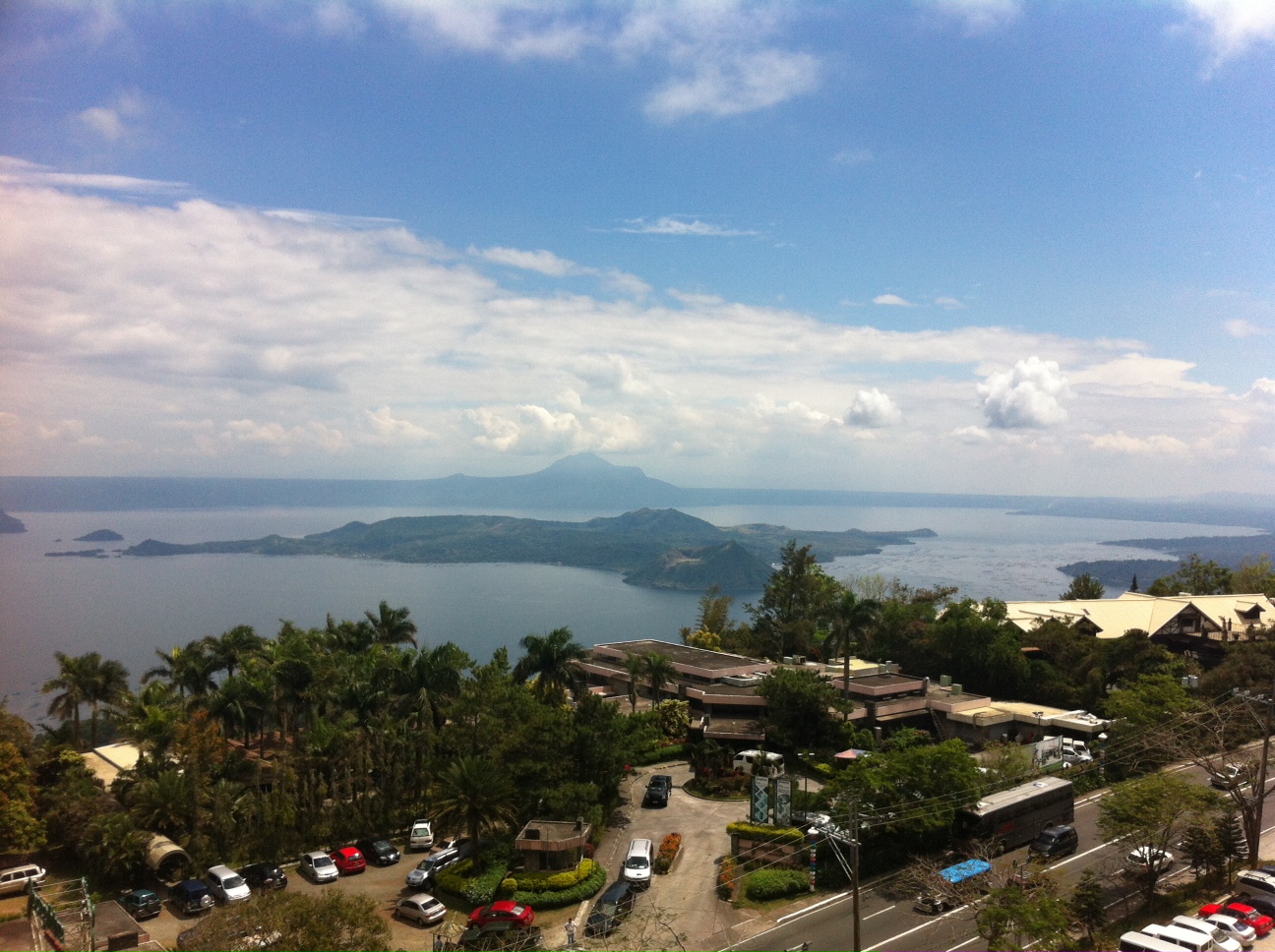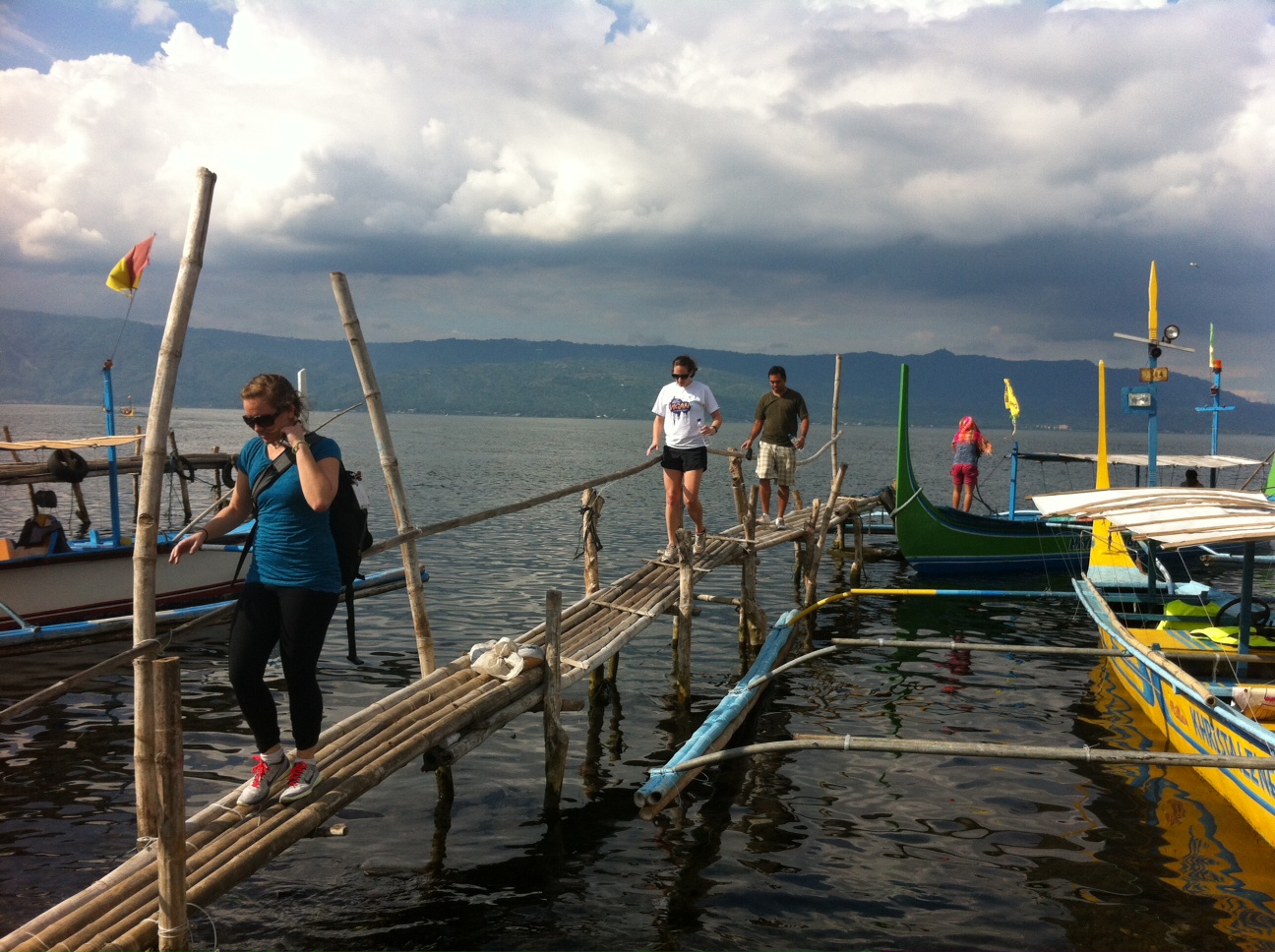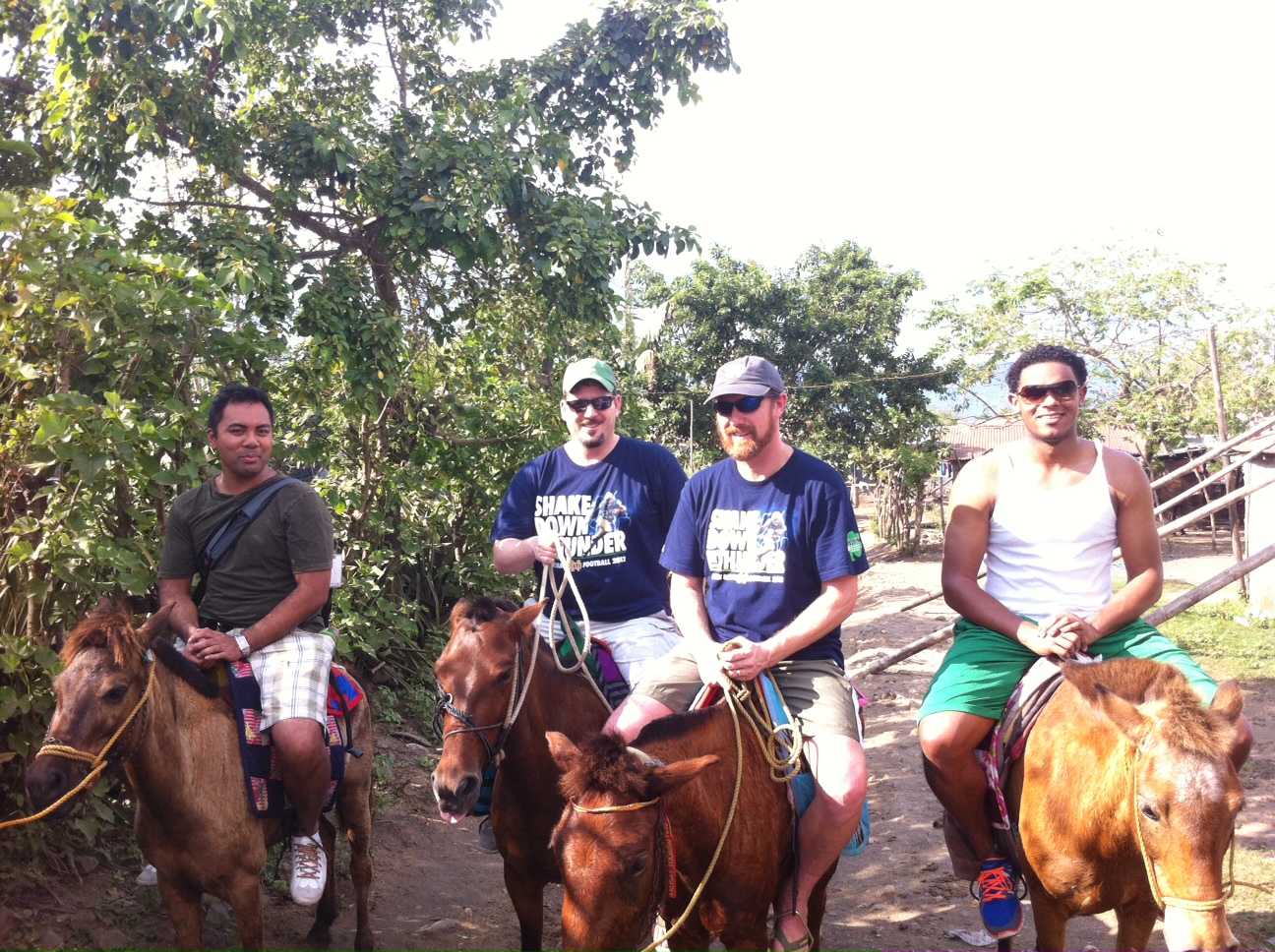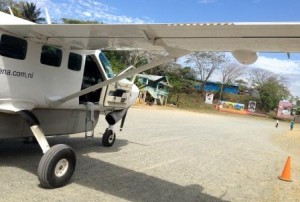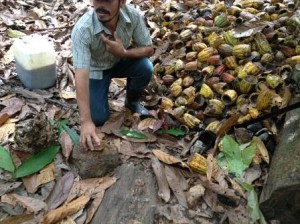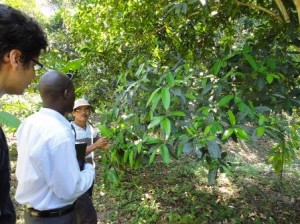Well, as expected, we didn’t have the Internet while were in Kailahun (pronounced Ky-lown). While we were all suffering withdrawals for the first 24 hours, we settled into our splendid accommodations and embraced the opportunity to really (really) be “off the grid.” I hope we created some kind of anticipation about our next post though… despite being long, it’s a good one! I promise! Bear with me! 🙂
The last time we touched base was on Tuesday night, when we travelled to Kenema (in the east) from Freetown (capital city on the west coast). I’ll start recapping with Wednesday morning.
Wednesday, March 6th – Kenema to Kailahun
We started our day in Kenema bright and early. The electricity (air conditioning included) at our hotel was only running (by generator) from 7pm to 7am, so waking up early is quite easy when the a/c goes out in the muggy conditions (it’s consistently been 85 degrees (F) at about 80% humidity).
We met the CRS staff at the CRS office in Kenema to touch base, then kicked off our research. Fortunately for us, there happened to be a monthly meeting that day with a CRS team that have been working in the field on a program in conjunction with Concern Worldwide (Gates Foundation) called Quality Circles. In short, this program has been working on the integration of TBAs (Traditional Birth Attendants) with the formal healthcare system taking into consideration the training of facilitators and phasing out dependence on NGOs. We interviewed eight field workers (CRS staff that have been overseeing meetings and training facilitators), the QC manager, a representative from Statistics Sierra Leone, and a representative from Concern Worldwide. They were so kind, open and honest, giving us a lot to reflect on as we loaded up to take a bumpy three-hour ride to Kailahun, the main city in the district of Kailahun and the location of the district government and secondary healthcare (hospitals, training facilities, etc).
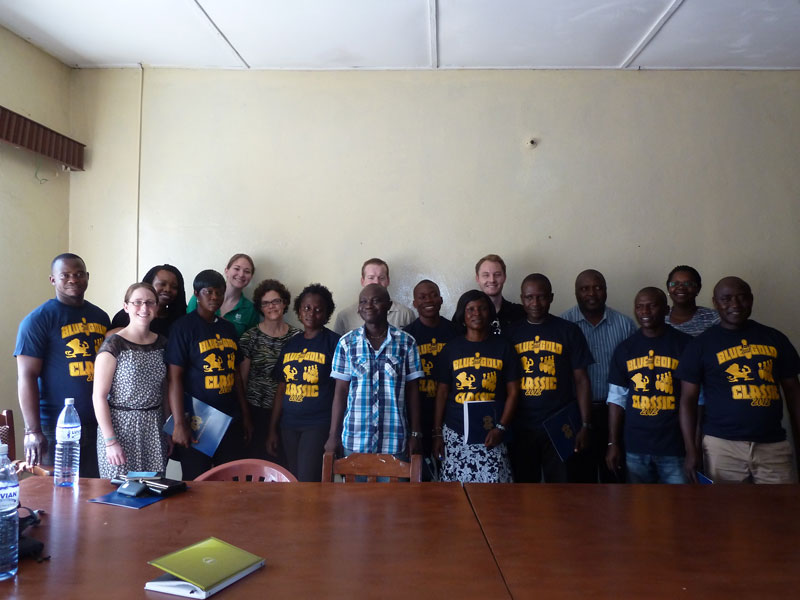
Team Sierra Leone with Quality Circles staff in Kenema.
Okay, bumpy may have not been the correct term… jarring may be better… especially for the final 20 miles on the washed out dirt roads. It made us realize, first hand, the struggles the infrastructure gives to people from remote villages seeking advanced medical attention in Kailahun.
When we got to our hotel, we had a meeting with the coordinator for a nutrition program called Mothers to Mothers named Yousef. He talked to us about his experiences with the integration of TBAs in the formal health system based on his first-hand experiences and interactions with women in the program. One of the most interesting insights from Yousef was his stress on involving fathers in maternal and child healthcare; men serve a major decision-making role when women decide to seek formal healthcare in Sierra Leone.
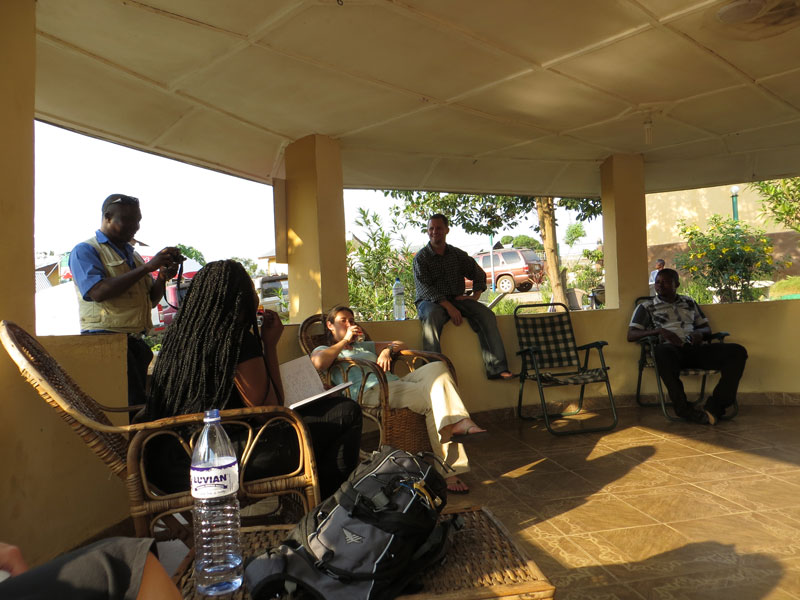
Team Sierra Leone meeting with Yousef at our hotel.
It wasn’t all work though! We were able to go to dinner together, share some stories, have a few laughs, and have a great debrief that night.
Thursday, March 7th – Kailahun
After we had a good night’s sleep, we were off to the Kailahun District government offices to meet with a group of district-level government health care representatives. We had introductions, then we split into two groups to discuss specific healthcare issues with the venerable District Health Officer, Dr. Bome (he was amazing!), along with health committee members from various villages, and financial officers.
That afternoon, we had am impromptu trip to the Kailahun district hospital. There, we met with more than twenty staff members including the (only) doctor, head nurse, financial officers, and attendants from the different hospital wards.The highlight of this trip was getting to meet a retired (but not tired!) midwife that came back to work at the hospital. When asked about some bookkeeping information at the hospital, she pulled out a worn notebook with all of the birth records from the month. We were floored.
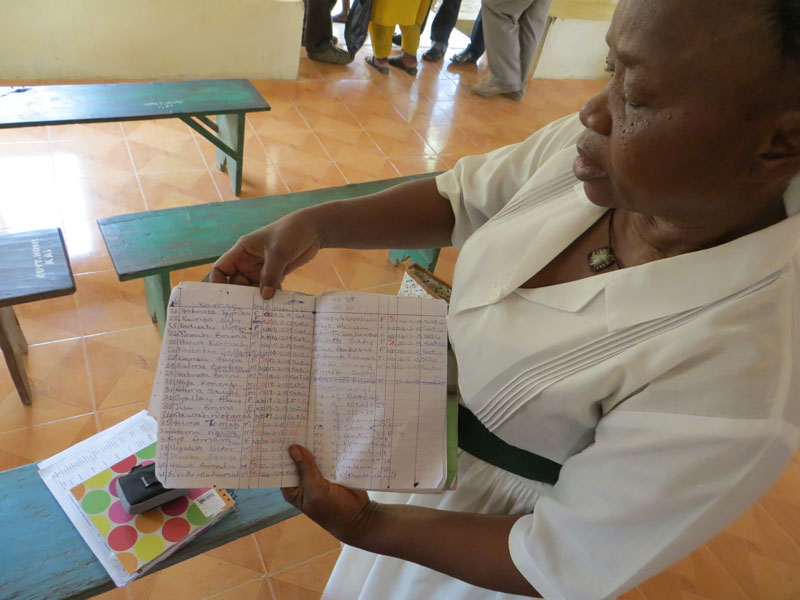
This woman has been a midwife since 1985. Despite being retired, she still delivers babies at the Kailahun hospital. In the photo, she is showing us her birth ledger for the month of February.
Friday, March 8th – Villages Near Kailahun
Happy International Women’s Day!
This was an incredibly memorable day for much of the team. We split into three groups, each going to a different health center in and around Kailahun. One group (Mike, Susan, and Kelly) went to a village called Gbalahun where they caught an International Women’s Day parade and interviewed a group of TBAs, community members, and the health center staff.
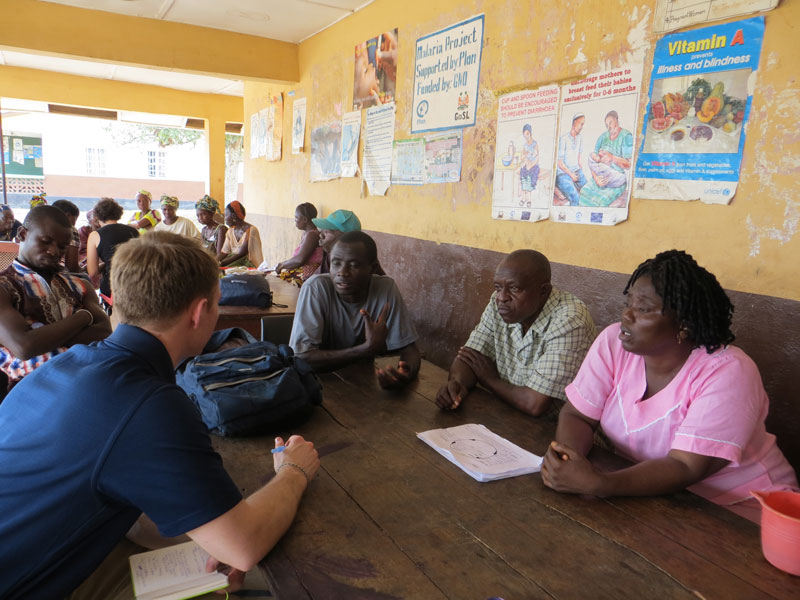
Team Gbalahun interviewing healthcare staff (foreground) and TBAs (background).
The second group (Lwando and Michelle) went to Mofindor and talked to the TBAs working with that clinic along with some other community stakeholders. On top of going on a nature walk to the nearest drinking water source – a 17 minute walk – with some community members, they were also able to get a photo at the Guinea-Sierra Leone border!
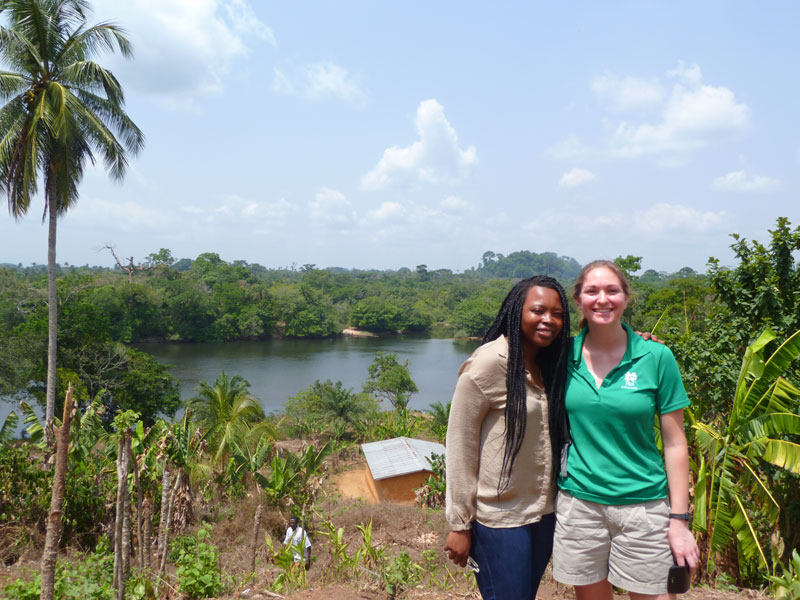
Lwando and Michelle checking out the border between Guinea and Sierra Leone.
Finally, the third group (Nancy and Phil) stayed in Kailahun to talk with health center staff there and follow-up on some financial information with the Financial Officer for the district.
Saturday, March 9th – Kailahun to Kenema
We woke up earlier, and hotter, than we preferred. Despite our air conditioners going out in the middle of the night, we were able to get a good start making the trip back to what we now consider “the big city of Kenema.” We thought it would just be a driving day, but we happened to drive near a BEMOC (Basic Emergency Medical & Obstetric Care) Center and meet the CHO (Community Health Officer, the guy that runs the center). On top of being extremely impressed with his knowledge on running the clinic, we were really impacted by his personal commitment to sustaining the clinic, many times out of his own pocket.
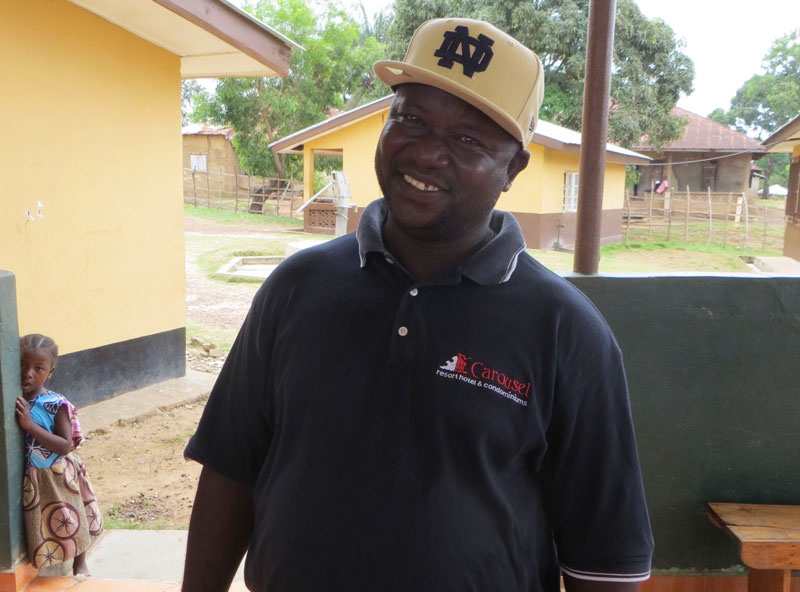
Community Health Officer at a BEMOC Center between Kailahun and Kenema.
When we asked him why he uses his own money to finance the clinic he responded, “Because these are my people. I care about my people and my country.” This commitment to social responsibility seems to be a theme among Sierra Leoneans. It’s humbling and inspiring.
Sunday, March 10th – Kenema to Bo & Freetown
Today, we left Kenema but not before heading out to 8am mass where a few members of the team were able to meet with the bishop and enjoy some great music!
Half of the team (Mike, Michelle, and Nancy) is making a stop in Bo to visit with some stakeholders there – government and NGO – while the remainder of the team (Lwando, Phil, Kelly, and Susan) kept going to Freetown. While it was a low-key travel day for the “Freetown Four,” the “Trio in Bo” had a busy day of meetings. We’ll all meet up again Monday evening to plan out the remainder of the week!
Shout Outs
Since this is practically a novel anyway, I might as well add a couple of quick acknowledgements here.
We’d like to thank Modern Africa, a true Kailahun experience, for feeding and putting up with us night after night. Despite having very limited dining choices in the town, we really did like the place!
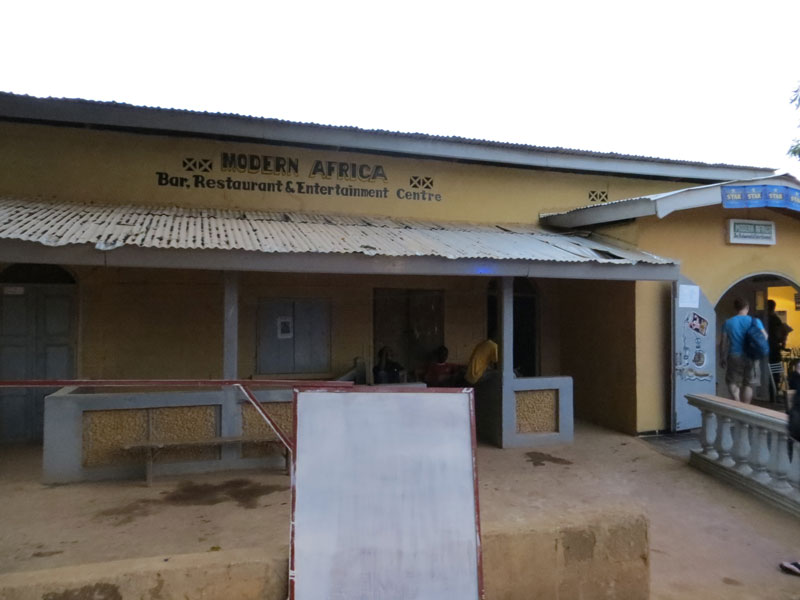
Modern Africa: our favorite restaurant in Kailahun! (Okay, one of the only restaurants in Kailahun!)
Also, a huge thanks to our unofficially official photographer (and driver), Shangbe. He’s always shown up at the right place at the right time with his camera snapping photos of the group and our surroundings. We love you, man!
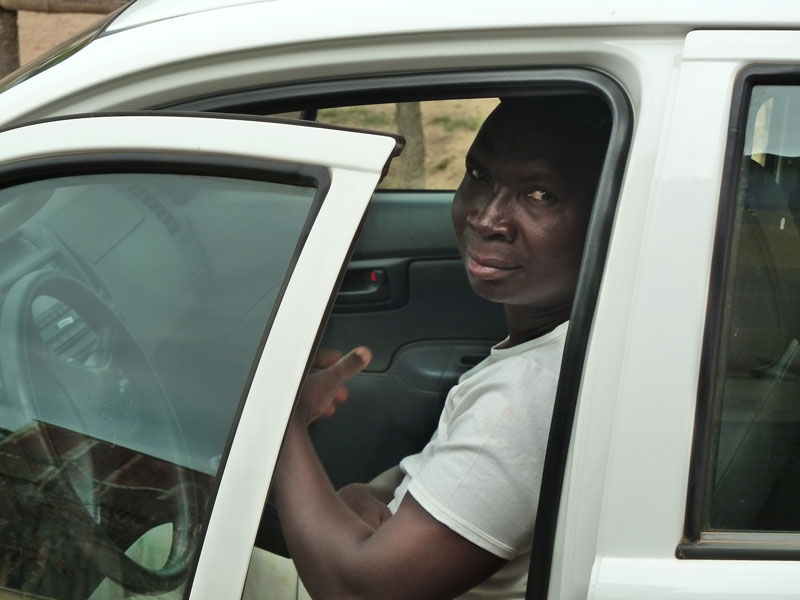
Shangbe. One of the amazing drivers, and super sneaky photographer, with CRS.
